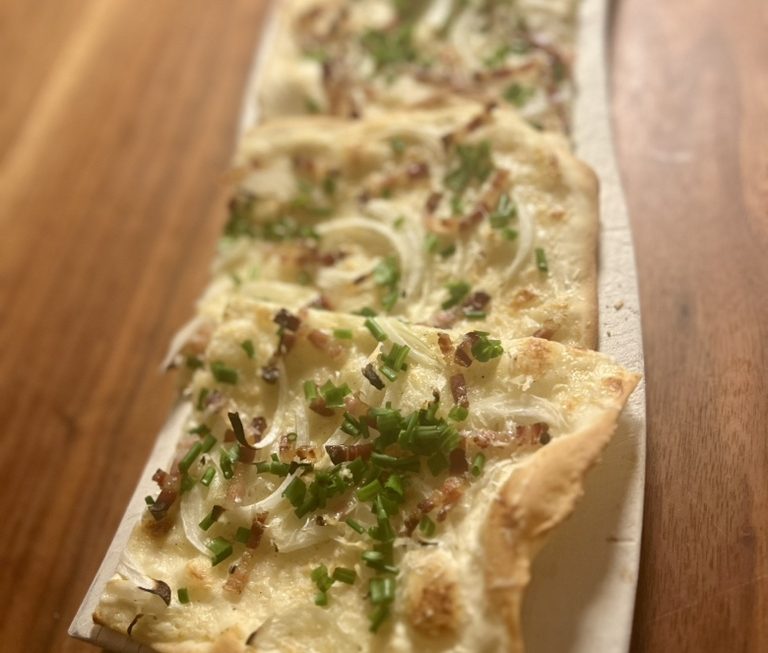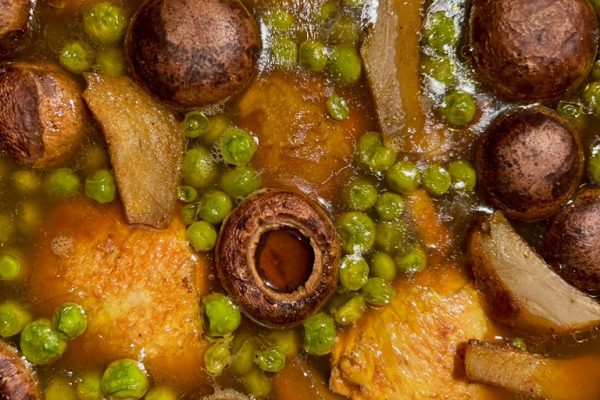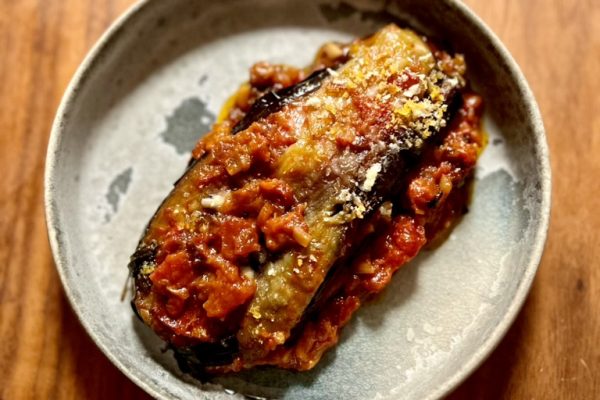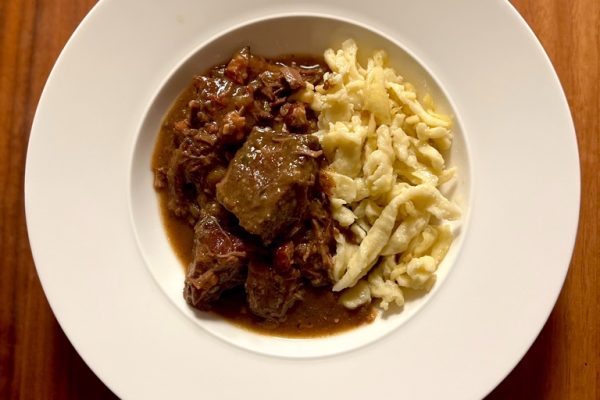Flammkuchen (Alemannic “Flammekueche”, French “tarte flambée”) originates from the French regions of Alsace and Lorraine as well as the outer south-west of Germany.
A particularly thinly rolled out pastry base is spread with crème fraîche, topped with raw onions and bacon and then briefly baked over a high heat until crispy. In addition to this classic version, there are other variations, including sweet ones, and of course all kinds of twists are suggested. We describe the classic tarte flambée and make a few recommendations for alternatives to stimulate your imagination.
Tarte flambée is best enjoyed warm. Because it is very thin and is topped lightly, it is ideal as a snack, for example with salads, or as a starter. It is very easy and quick to prepare.
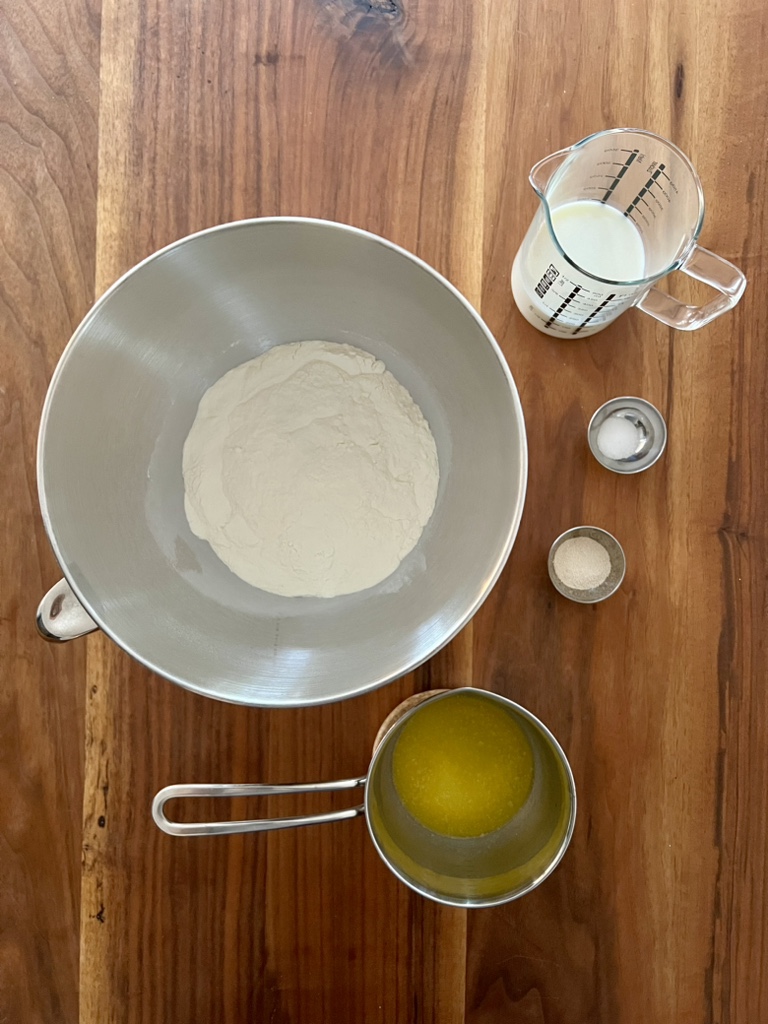
As always, the type of flour you use plays a major role, but is difficult to describe internationally because there exist so many different types of flour with very different names around the world.
We recommend a special type of strong flour, also known as “Wiener Griessler” or “Weizendunst” in German-speaking countries. This is a flour with a fairly coarse grain that makes doughs very elastic. It contains around 10 g of protein per 100 g of flour. Alternatively, you can use wheat flour type 550 (Germany) or 700 (Austria), these types are also somewhat coarser than most standard flours. We do not recommend very fine flour for this.
Doughs for tarte flambée are made with and without yeast, in the latter case often with oil. We prefer the variant with yeast and at the end of the recipe we give the ingredients for our favourite dough by far, which is very easy to process especially thin and crispy. In addition to the flour, you only need a little yeast and salt, a mixture of milk and water in equal parts and melted butter.
Yeast is briefly dissolved in milk and water, then everything can be kneaded into a smooth dough. A food processor can do this in just 4 minutes. Cover the dough and leave it to rise in a warm place (for example in the oven with the light switched on) for 30 – 60 minutes. It should visibly increase in size, but does not have to double.

You don’t need much for the topping either. Onions are halved and then cut lengthways into thin strips, bacon into so-called lardons. To do this, cut slices of bacon about 3 mm thick crosswise into equally fine strips.
Stir crème fraîche and season delicately with salt and pepper, optionally with a little nutmeg. Chives cut into fine rolls are particularly suitable as a fresh garnish after baking.
Preheat the oven to a high temperature, which should be at least 240 degrees. If you have a fan oven, switch it on. Our new oven even reaches 300 degrees, which makes the tarte flambée even better.
As with pizza, we recommend baking on a wire rack with a Silpat mat on top. If you don’t have such a mat (it’s well worth buying one), you can use baking paper on a baking tray.
This dough is very easy to roll out thinly on a lightly floured surface. It should not be thicker than 2 mm. It is then placed on the baking mat or baking paper, spread thinly with crème fraîche and topped with a little onion and bacon. Optionally, you can grate a little Parmigiano Reggiano or another hard cheese on top for extra flavour. No cheese is used in the original version.

The tarte flambée is ready after around 10 minutes, crispy and delicately browned at the edges. It takes less than 8 minutes at 300 degrees. It is now sprinkled with chives and needs to cool slightly before you can enjoy it.

Cut into convenient pieces, tarte flambée is also a great accompaniment to an aperitif or as finger food.

Ideas for variations:
- Goat’s cream cheese and sour cream for the base, topped with thin slices of pear and Camembert, drizzled with a little honey after baking
- Crème fraîche flavoured with horseradish, topped with smoked salmon and, after baking, supplemented with dill, chives and a few drops of olive oil
- Crème fraîche flavoured with lemon zest and honey, topped with thin apple slices, which are mixed with lemon juice, cinnamon and sugar beforehand
Enjoy.
And may the taste be with you.
Ingredients (for 4 baking sheets):
Dough:
300 g flour (strong flour and not ground too finely)
9 g fresh yeast or 3 g dry yeast
1 tsp salt
90 ml milk
90 ml water
30 g melted butter
Topping:
200 g crème fraîche
2 onions, finely sliced (alternatively: spring onions)
200 g bacon, finely sliced into “lardons”
Salt and pepper
Optional: A little nutmeg
Optional: A little Parmigiano Reggiano
Chives, finely chopped
